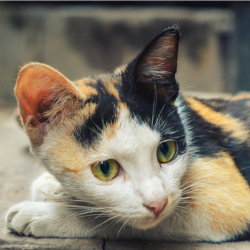Many cat owners mistakenly believe that declawing is the best way to prevent unwanted scratching. They may think that declawing is equivalent to having your fingernails trimmed. In fact, declawing means amputating the last bone of each toe. If performed on a person it would be like cutting off each finger at the last knuckle. Side effects of declawing can include paw pain, infection, tissue death, and back pain. Removing claws also changes the way a cat’s foot meets the ground and can cause the sort of pain you’d feel if you were forced to walk around with your feet stuffed into shoes that were too small. Many countries have banned declawing and the Humane Society of the United States opposes the practice.
The truth is that while declawing may prevent kitty from damaging your furniture, it often leads to a host of other physical and behavioral problems. Declawing can make a cat less likely to use the litter box and more likely to bite. Scratching is perfectly normal behavior for cats, and serves several purposes: to remove dead skin husks from their claws; to stretch and strengthen upper body muscles; and to mark their territory. In other words, your cat probably isn’t shredding the sofa because he’s angry and just wants to destroy it.
So what’s the best way to keep both kitty and furniture intact?
First, keep your cat’s claws trimmed. I purchased a tool, the unfortunately named “guillotine,” and learned how to use it effectively thanks to a quick lesson from my vet. Claw clipping is painless and will help minimize damage from scratching. Second, provide alternatives to kitty’s preferred targets by placing scratching posts in those locations. Best are posts that are sturdy and won’t tip. Because many cats like to “hang” from their front claws and do a full body stretch, a post that topples over will only encourage kitty to go back to scratching a more stable piece of furniture. Many cats, mine included, like to scratch wood; some prefer a sisal or the feel of carpet. To entice your kitty, you can sprinkle a little catnip on the scratching post or hang a toy from the top. To further discourage furniture scratching, you can use double-sided tape on the corners of sofas and chairs until your cat has adapted and is using the scratching post regularly. And rewarding kitty’s good behavior with a favorite treat can’t hurt!





